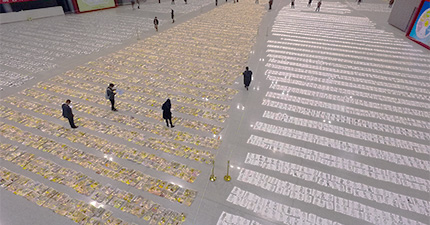Saturn the Golden Age
The golden age is never something you find yourself in the middle of. It always shows up in reminisces, in the golden years of one’s life. The golden age, then, is not an experienced reality but a type of eye, or viewing, of memory.
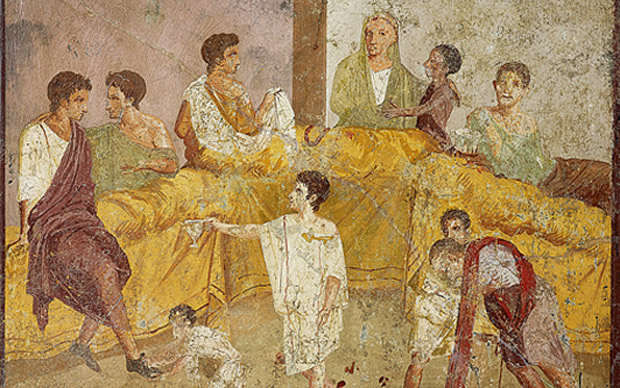
In Roman times, the archetype of the golden age was a poetic metaphor used to comment on, contrast, and satirize current events. If the world of the present was busy with war, then the golden age had “no armies, no rage to kill, [and] no war existed.” If the present day was scarce in resources, then in the golden age, “oak trees dripped honey, and ewes, voluntarily coming forward, gave free-flowing milk.” If, in the present day, property laws were unfair, then the golden age had “marked fixed limits to the farms” (Tibullus, 1.3) Rather than pure fantasy, the golden age represented political commentary. It was a satirical tool.
What remains consistent with this golden age is that it is always a time when Saturn, the old god, is king. It is also always an agricultural place. Saturn, the Greek version of the god, was one that merged indigenous agricultural gods. In Rome, this figure came to represent an idyllic time of complete agrarian dependency, rather than political means to distribute resources. Saturn ruled in a mythological time period of naive farming, before Jupiter came to create government and sovereignty. In Saturn’s domain, there is no recorded history and only cyclical turnings of the land.
Saturn was worshipped with gambling—the game of dice was a one that farmers played after seeds were sown and no more work could be done to ensure a good harvest except to wait and see if fortune was pleased with them. The dice represented the capricious nature of pure chance. No matter who you are born as, no matter your social station, and no matter your momentary wealth, the dice reminded you that chance could take it all away. In an agricultural sense, there is only so much work you can do to make your crops grow. Ultimately, farming is a gamble played against nature. In mythology, Saturn was the all or nothing god who didn’t know how to create hierarchies of government in order to solidify his rule and, thus, was overtaken by Jupiter who understood delegation. Saturn, god of chance, either gave you everything or took it all away. Saturn, ruling Capricorn, has a capricious aspect of nature. Rather than justifying what he gives and takes through reason, morality, or laws, Saturn is the reality that just happens.
In Roman cities, where the farmer was a respected and central figure, games of dice were played at the Saturnia. In these games, every man would take off the clothing that represented his station in life, whether that was high or low, king or slave, and wear the toga that represented Roman citizenship. Unmarked by his status, he would play to see if his fortune was good or bad. Fortune, ruler of a time before Jupiter/Zeus came to delegate power in a hierarchal manner, was capricious and pure. The Saturnia represented the naiveté and precocity of the agrarian golden age, where there was no systems of power and man was wholly dependent on nature.
Saturn, then, was almost always associated with fortune, which was a lunar concept in Roman times. As Rhetorius, an Egyptian astrologer, states, “The moon is the fortune of all.” Astrologer John Foster relates this statement to the etymology of fortune: Fortune is where forms are constantly changing and the moon, holder of form, is the body. Fortune, then, was a biological concept and one related to the needs of the physical body which may or may not be met by nature. It described how the physical body aligns with the physical world. To be fortunate is to be aligned with nature. Because Saturn is the ruler of agriculture, the connection between the moon and Saturn was about the unpredictability of the harvest and, with it. our adjusting appetites. Our attempts to feed ourselves is the point of tension in which culture is produced. ”For as far as Roman usage is concerned, the chief point always was the connection of culture with nature; culture originally meant agriculture, which was held in very high regard in Rome in opposition to the poetic and fabricating arts…It was in the midst of a primarily agricultural people that the concept of culture first appeared, and the artistic connotations which might have been connected with this culture concerned the incomparably close relationship of the Latin people to nature, the creation of the famous Italian landscape,“ writes Hannah Arendt.
Arendt continues her essay on tradition and hierarchy, writing that, “Contrary to our concepts of growth, where one grows into the future, the Romans felt that growth was directed towards the past. If one wants to relate this attitude to the hierarchical order established by authority and to visualized this hierarchy in the familiar image of the pyramid, it is as though the peak of the pyramid did not reach into the height of a sky above (or, as in Christianity, beyond) the earth, but into the depth of an earthly past.” In this image of Roman hierarchy, the authority that we typically associate with Saturn doesn’t come from higher powers but lower powers. The authority of Saturn is not the elevated, elite authority of a social pyramid structured by prescribing onto its components the correct place and role but one that comes directly from the land. The authority of Saturn doesn't come from government but from the traditions that connect our experiences in the present to the records of our ancestors. This same authority is what the structure of civilization builds on. In other words, governments don't have authority over people. Rather, authority is fundamentally located within the people, and their relationship to land. This authority is then distributed throughout society until it constructs a government.
Though Saturn was a king, Saturn was the king of no land. In Roman times, Saturn was the one, true king of an imaginary golden age, a rhetorical symbol of nature that existed to criticize existing government powers. No human rulers struggled over power in the golden age because civil government did not exist. Without government, humankind relied on the whims of nature to meet their needs. Saturn was both the wish for an utopia where the present day government did not exist and the fear of a dystopia where man was subject to the whims of nature unshielded. At its core, Saturn is a reminder that authority is the result of a stable relationship between humans and land as well as between culture (agriculture) and nature.
The Mythological Golden Age and Utopianism
Two major utopian projects have defined the way that agrarianism lives as a dream within modernity—that of Nazi Germany and the United States.
The ideal of citizenship through individual land ownership is based on John Locke’s ideas of liberalism. Locke thought that state power could be limited by giving individual landowners voting power. This is the same ideal that Thomas Jefferson, purchaser of Louisiana and most of the American Midwest, subscribed to. For Jefferson, the self governing farmer was the ideal citizen. Agrarian liberalism and its land owning farmer represented a necessary break from monarchy and feudalism.
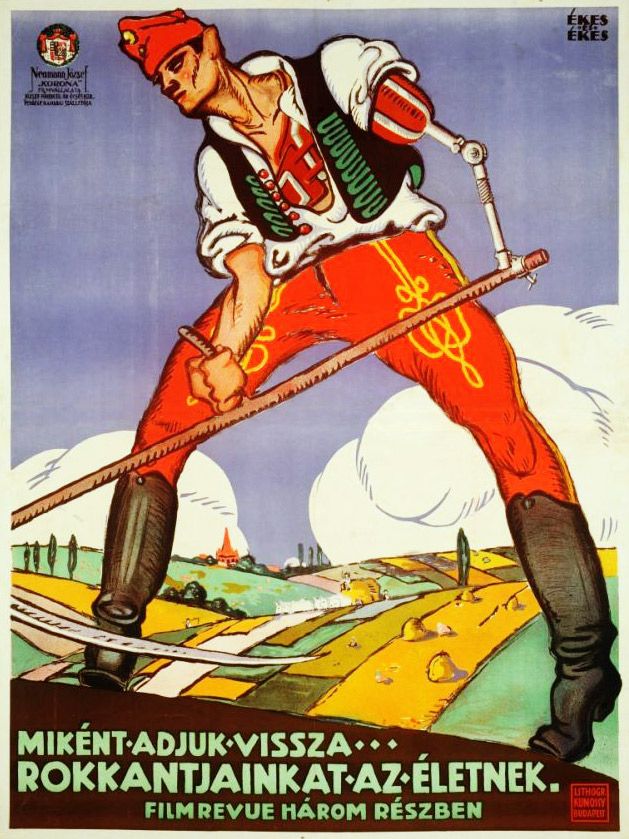
Hitler’s dream of Germany, likewise, was an agrarian ideal. He prioritized the invasion of Ukraine because of its rich, black soil. Nazi agrarian romanticism saw the peasantry as the foundation of German national identity. Blood was connected with soil and both were representative of a “natural order” that contrasted the “asphalt culture” of cosmopolitanism, universalism, and internationalism.
Both the United States and Nazi Germany glorified the simplicity of rural life and saw urban centers as an type of European cosmopolitanism that the folk had become alienated from. Both, in reaction to Jupitarian struggles for power upon which ideology after ideology argued and negotiated, tried to construct an utopian and agrarian golden age free of such intellectualism. If Jupiter is discourse, the United States and Nazi Germany became sick of it. The USA distanced itself from fast talking city dwellers and idealized the sturdy and silent farmer. Nazi Germany’s anti-Semitism, like the anti-immigration ideology of today, was a misplaced paranoia created by class division. Both powers pined for a return to Saturn’s domain, that of the agricultural golden age in which every citizen found freedom by taking off the markings of their social class, as long as you had the right racial makeup.
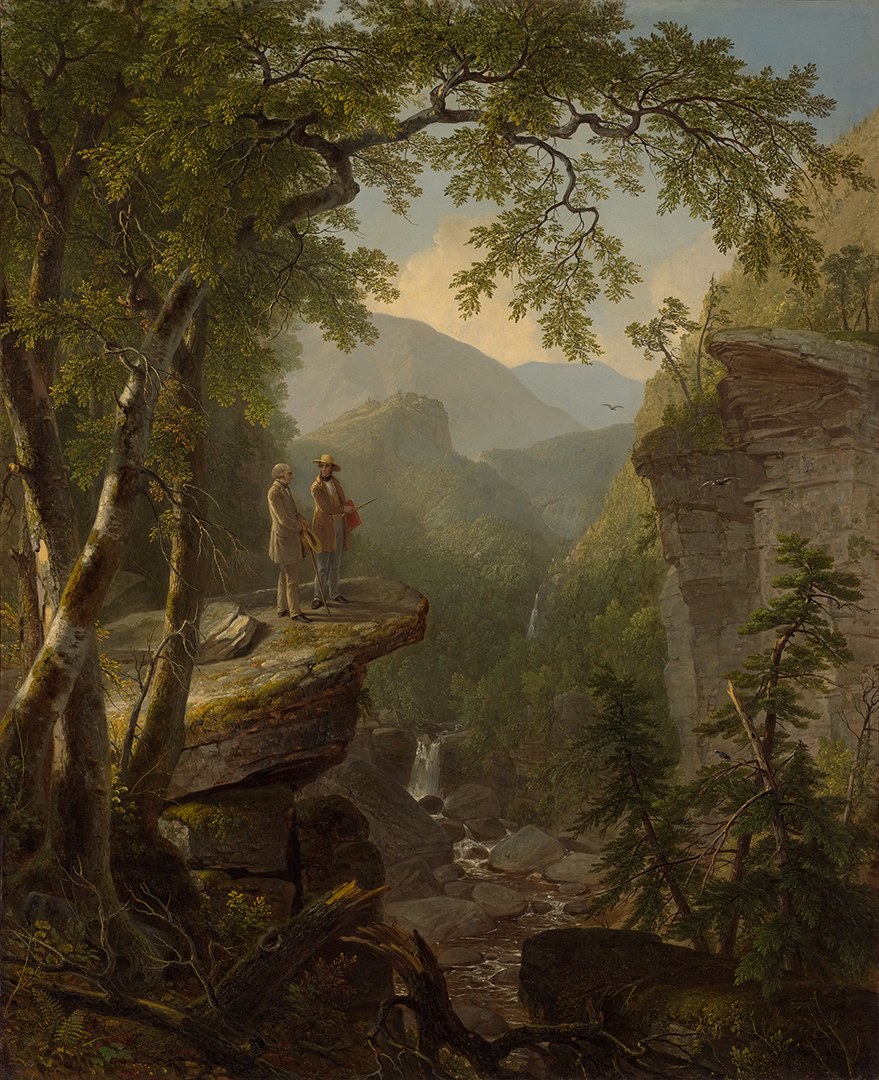
Both Hitler and Jefferson’s agrarian dreams needed fertile land. Because authority comes from land, such utopias could never exist without new land. Both, then, created a racial order that became a pretext to land seizure. To Jefferson, the indigenous people of the Americas were racially inferior and had to be exterminated. To Hitler, Ukrainians and Poles could be kept as a temporary rural workforce that would eventually be replaced by German farmers while Jews were exterminated from urban centers.
The myth of Nazi Germany and the United States as agrarian visions are still alive today. These myths carry the myths of white supremacy and efficiency with them. When we think of the Nazis, we still picture them as they wanted to be represented—as a strong, white machine. We still picture the expansion of America as the spread of a strong, pioneering people. The truth about Germany during World War II was that Hitler could never convince enough Germans to become the farmers that he idealized so much. He did not have enough laborers willing to colonize the black soils of Ukraine and so he could not lift his economy from ethnic non-Germans as a working underclass. Much of Nazi Germany’s wealth came from the businesses seized from their former Jewish owners. In the United States, the country was lifted out of economic peril again and again through the conquest and government sale of newly stolen land to new, white immigrants. The dominant rural worker was not the white, self governing ideal citizen but always the slave. The American economy never relied on Jefferson’s agrarian ideals but, like Nazi Germany, on a racial underclass and the constant seizure of new land and resources.
The ways the United States and Nazi Germany used the agrarian ideal was both similar to and different from the ways Saturn’s golden age influenced Roman society. In Rome, the golden age was a cultural symbol. Gianni Guestella writes that, “Generally, Romans did not represent the original perfection [of an agrarian golden age] as a natural model; rather it, too, was a cultural model which had gradually degenerated.” The original perfection of Saturn’s golden age was used to reveal the degeneracy associated with political and cultural fabrications for the Romans. While the USA and Germany both used the concept of degeneracy associated with the Saturnian agrarian ideal to invoke fears around racial mixing, both nations pursued the state of original perfection as an achievable utopia and not as a symbolic tool more useful within poetic and political manifestos rather than economic planning. Both glorified images of the folk or Volk, feeding depictions of working class people through print media and, later, the television rather than creating genuinely populist ethics. Both the USA and Germany tried to turn the position of authority, which is always located within the people, into a media phenomenon. Moreover, the USA imposed western cultural ideals, of the self governed agrarian worker, by erasing indigenous relationships to land.
Saturn the Laborer
As we have seen, Saturn, in Roman times, was a king even if he was an exiled king of a long gone and timeless age. When feudalism became the dominant agricultural model in Europe in the Middle Ages, Saturn’s image changed from that of the old king to that of the old peasant. As the condition of the agricultural class worsened, Saturn’s image, in turn, became associated with ill fortune, miserliness, exile, and poverty.
Saturnalia, the celebration of chance, was also a celebration of chaos with organization. While Jupiter was seen as the organizing principle of civilization, Saturn was the organizing principle of nature that disrupted hierarchal powers and the social strata of society. Because nature mandates that all things die so that life can be regenerated, Saturn is a hungry god that demands sacrifice. Saturn has always been associated with death, because death fertilizes the fields, but what death looks and feels like as a symbol is always changing.
In the Roman Saturnalia, slaves were served by their masters and children were given gifts. The festival of Saturn, like the golden age it represented, was a reversal society’s power relations. Because slaves and children were not citizens and part of the political realms governing life, they represented death. The political outsider and death were celebrated, with Saturn, as potential agents of chaos that could disturb the power relations of the day. Through death, the distribution of wealth and debt are overturned along with the land. The political outsider, likewise, seeks to disrupt the current distribution of natural resources.
During feudalism, the image of death became sinister. The Grim Reaper, still agricultural as he carries a scythe, is starved down to the bones and wears a tattered cloak. Rather than being the king of a realm, the Grim Reaper is a drifter without a sense of belonging. Saturn, as death, became desolate. Likewise, the devil, which was a figure that consolidated a myriad of smaller demons and monsters, became a popular symbol during industrialization. The pagan celebrations of death as a regeneration principle became seen as anti-Progressive, irrational, and evil.
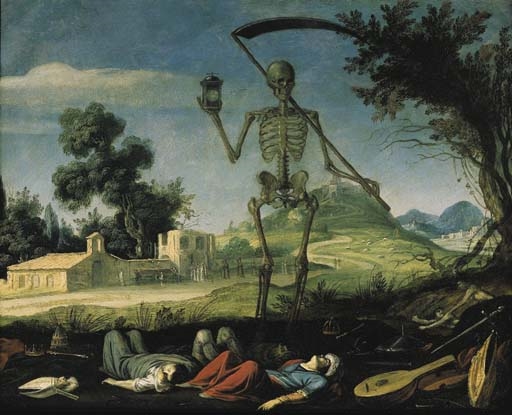
The Grim Reaper is divorced from his roots as a god-king of the peasant classes through both organized religion and secular institutions. His sickle does not appear again until Marx imagines that a revolution can, again, reorganize and regenerate society. In modernity, the Saturnia becomes the Marxist revolution. Like the Saturnia and because Marx's revolution has inspired diverse forms of government since its theorizing, we can treat the revolution as a symbol or ritual that is imagined in order to meet psychological needs. The ritual of revolution, like the ritual of Saturnia, imagines death as fruitful, seeks to disrupt the corrupt status quo, and allies itself with political outsiders.
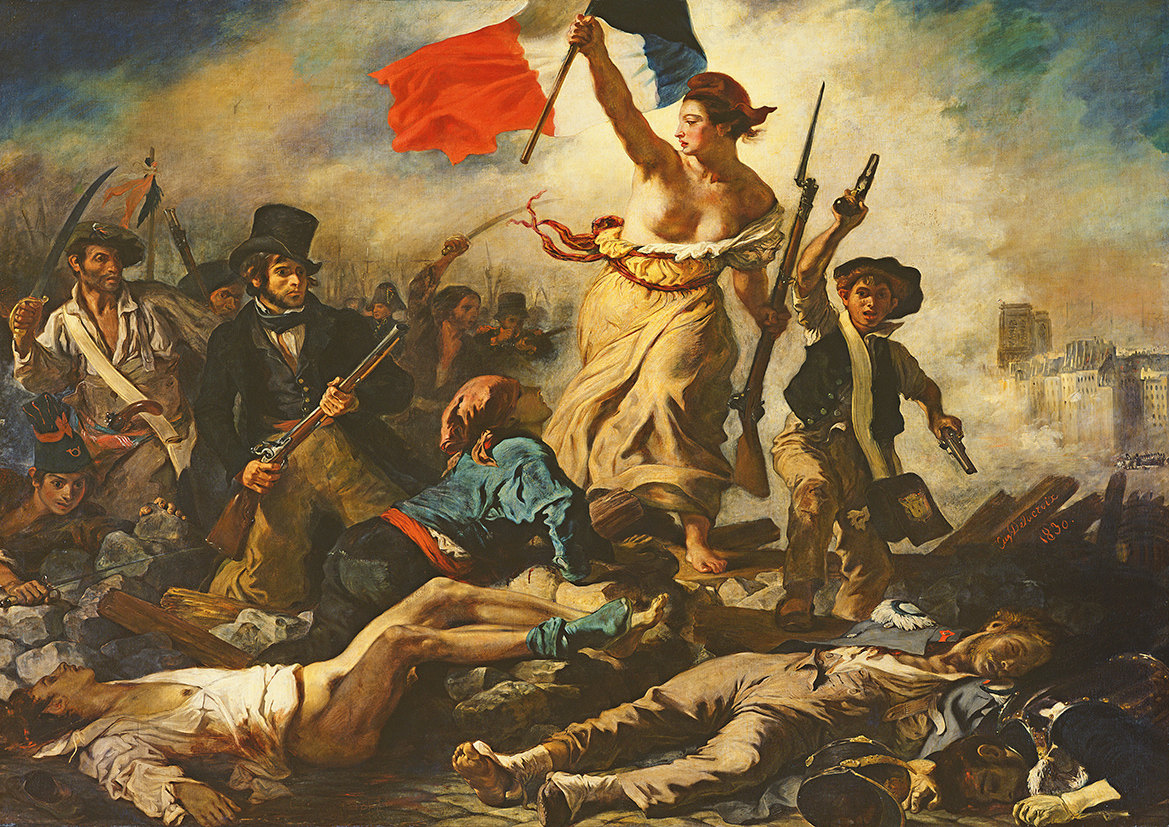
Saturn in Late Capitalism
Gambling is an intrinsic part of Saturn worship. Saturn rules nature and farming is a human bet against nature. Abundance and scarcity are ruled by physical properties described by fortune.
Under late capitalism, gambling is a part of the economy itself. It is impossible to plan for retirement without casting your dice in the stock and bonds market, hedging a bet with the market. When you bet on the market, you bet against the constant change of appetite of the population. In other words, you bet on fortune. In popular American imagination, the stock market is dreamed of as an equalizer—an imaginary realm in which anyone can get rich quick if they are either savvy and lucky enough. Every American can have a stake in corporate health if they invest in the stock market. This market functions culturally like the dice games of the Romans except, instead of being a symbolic and ritualistic game played at special occasions, it is the logic that our entire economy and public welfare is founded on.
The real gamble that farmers of Roman times bet on was against nature. The dice games were a symbol for the percarity of life in the face of certain death. In contrast, our stock markets are an effort to control nature and minimize the risk of being subject to natural whims. We have stopped betting on nature and have industrialized the farms.
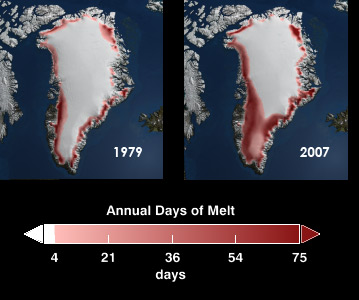
Saturn, however, happens to be a wrathful god and one whose consequences become more and more dire the more they are put off. By refusing to gamble with the agricultural god and seeking to pathologize him as something that needs to be controlled, we have only delayed our gamble with nature. Late capitalism, by way of name, is the end of capitalism due to natural forces. The industrialization, or creation of a risk minimized first world, only exports the effects of creating such a controlled environment elsewhere. Heavy minerals are mined in the third world, natural resources sold and swallowed, and pollution is exported. Climate change will devastate the third and developing worlds before it reaches the wealth hoarding nations.
Arendt writes that:
“No doubt human life, placed on the earth, is surrounded by automatic processes—by the natural processes of the earth, which, in turn, are surrounded by cosmic processes, and we ourselves are driven by similar forces insofar as we too are a part of organic nature. Our political life, moreover, despite its being the realm of action, also takes place in the midst of processes which we call historical and which tend to become as automatic as natural or cosmic processes, although they were started by men. The truth is that automatism is inherent in all processes, no matter what their origin may be—which is why no single act, and no single event, can ever, once and for all, deliver and save a man, or a nation, or mankind.”
Audre Lorde simply says that:
“Revolution is not a one time event.”
Contrary to the ways that we use revolution as a symbol or ritual, always bloody, destructive, necessary, and final, Arendt and Lorde ask how we can sustain revolution. Saturn questions, from the golden age to modern utopia to present day climate change, are always questions of sustainability.
Sustainability is the realization that authority isn't something that disciplines us from above but what is given to us from the land. It is the realization that Saturn isn’t what gives us authority over others but what we give authority to, in an attempt to negotiate for safety. The central question to matters of sustainability is the difference between what we can live with and what we can live without.
If we can’t live without the whims of nature, can we live with the whims of the market? If we can’t live without the abundance of life, can we live with the abundant commodity? We if can’t live without the fertility of land, can we live with the reproduction of our imagery, fed back to us by corporate entities as representative politics? And if we can’t live without waste, can we with with corporate waste?


